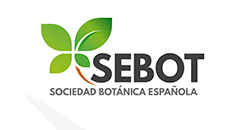Scientific Area
Children's perception and plant identification knowledge: Using drawing to tackle emic perspective.
ID: 613 / 440
Category: Abstract
Track: Pending
Proposed Symposium Title: Children's perception and plant identification knowledge: Using drawing to tackle emic perspective.
Authors:
Vincent Porcher1,2, Sandrine Gallois2, Victoria Reyes-Garci´a2,3, Stéphanie Carrie`re1
Affiliations: 1 Institut de Recherche pour le Développement (IRD), UMR SENS, Montpellier, France 2 Institut de Ciència i Tecnologia Ambientals, Universitat Autònoma de Barcelona, Barcelona, Spain 3 Catalana de Recerca i Estudis Avanç ats (ICREA), Barcelona, Spain
Abstract:
In small-scale societies, people learn to identify plant species during childhood. Plant recognition is an important baseline knowledge, immediately useful to avoid intoxication risk due to wrong identification. Plant recognition is at the basis of other ethnobotanical knowledge. However, despite many studies on folk classification, we still have a narrow understanding of the criteria locally used for species identification; the gap being even larger regarding children's plant identification criteria. Here, we study the criteria used by Betsileo children and adolescents to identify wild edible plant (WEP) species using a child-adapted method including drawings and follow-up interviews. We worked with 80 teenagers (from 12 to 17 years old; 51 girls, and 29 boys). Our results suggest that teenagers use a large spectrum of visual criteria to identify plants and that these criteria match with botanical and ecological knowledge documented in the literature and herbarium vouchers. We found that 35% of the identification criteria used were non-morphological (e.g., phenology, biotic interactions), suggesting deep ecological knowledge. On average, teenagers use more than nine distinct criteria per plant, which allows them to identify most plant species with a very high level of precision. The precision level of plant representation increases with age for boys, but remains constant for girls, suggesting different dynamics in plant identification knowledge acquisition. We also found that boys and girls use different identification criteria: girls focus on morphological criteria while boys also incorporate ecological criteria, such as landscape features and biotic interactions, in their spectrum of identification keys. Our results highlight the complexity of teenagers’ plant knowledge and the importance of the ecological context for plant identification. Finally, our finding suggests that gender plays an important role in plant identification’s knowledge acquisition, probably because gender differentiates daily interactions with plants.




